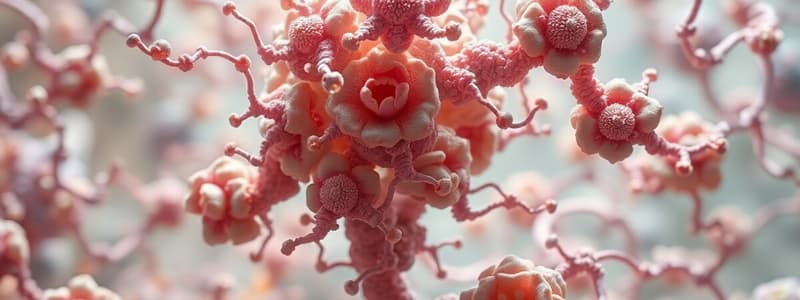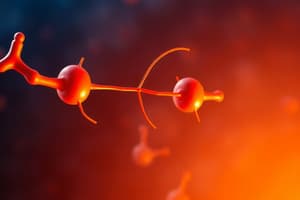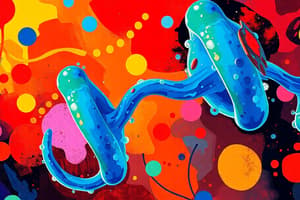Podcast
Questions and Answers
Which of the following best describes mechanical energy?
Which of the following best describes mechanical energy?
- Energy related to heat and temperature
- Energy stored in chemical compounds
- The energy associated with vibrations
- The combination of kinetic energy and potential energy (correct)
What occurs during the transition state of an enzyme-catalyzed reaction?
What occurs during the transition state of an enzyme-catalyzed reaction?
- Substrates are converted to products
- The enzyme is permanently altered
- Substrate binding causes enzyme shape stabilization
- Old bonds break and new ones form (correct)
What is the role of coenzymes in enzyme function?
What is the role of coenzymes in enzyme function?
- To bind substrates irreversibly
- To permanently alter the enzyme's structure
- To provide inorganic ions required for activity
- To enhance or assist the activity of enzymes (correct)
What effect does competitive inhibition have on enzyme activity?
What effect does competitive inhibition have on enzyme activity?
What distinguishes catabolic pathways from anabolic pathways in metabolism?
What distinguishes catabolic pathways from anabolic pathways in metabolism?
Flashcards
Chemical Energy
Chemical Energy
Energy stored in chemical compounds, like the bonds of food molecules.
Enzyme Function
Enzyme Function
Enzymes increase the rate of chemical reactions by lowering activation energy. They act as catalysts, speeding up the reaction process.
Induced Fit
Induced Fit
This occurs when the active site of an enzyme changes shape to fit the substrate more tightly when it binds.
Competitive Inhibition
Competitive Inhibition
Signup and view all the flashcards
Catabolic Pathways
Catabolic Pathways
Signup and view all the flashcards




